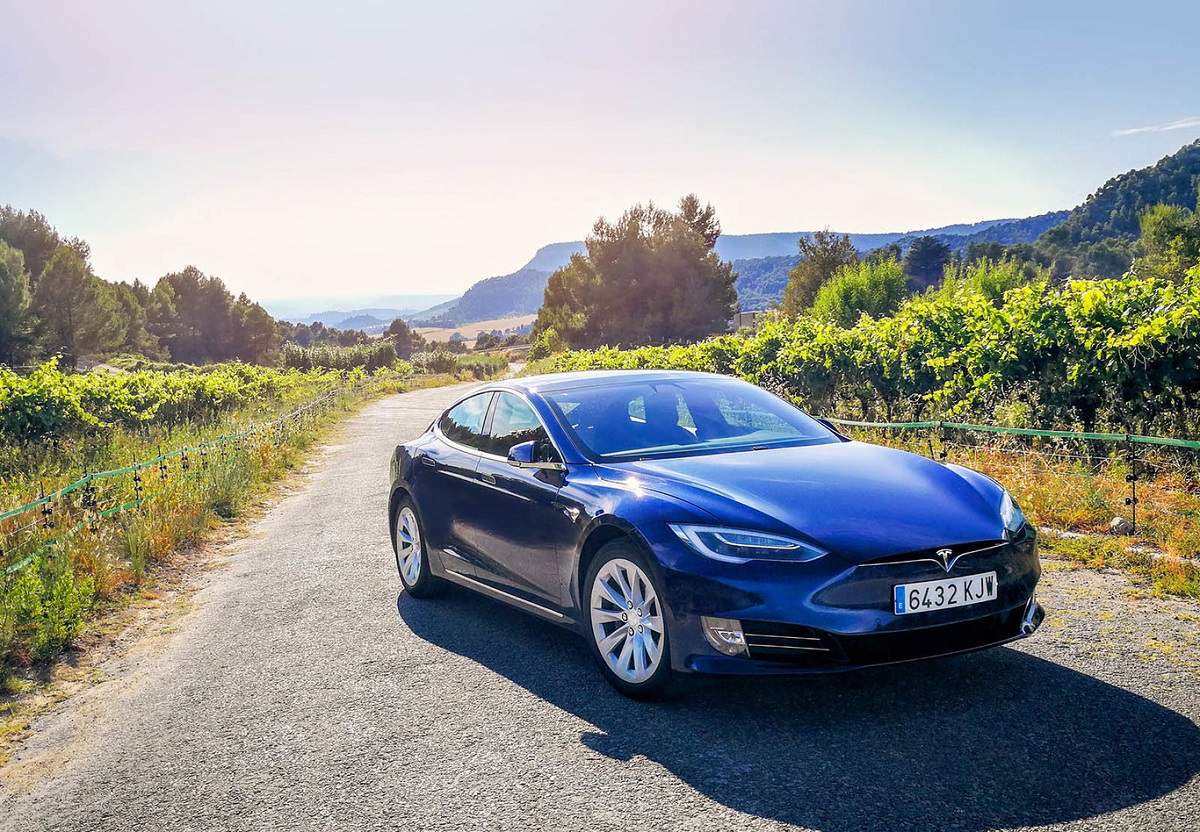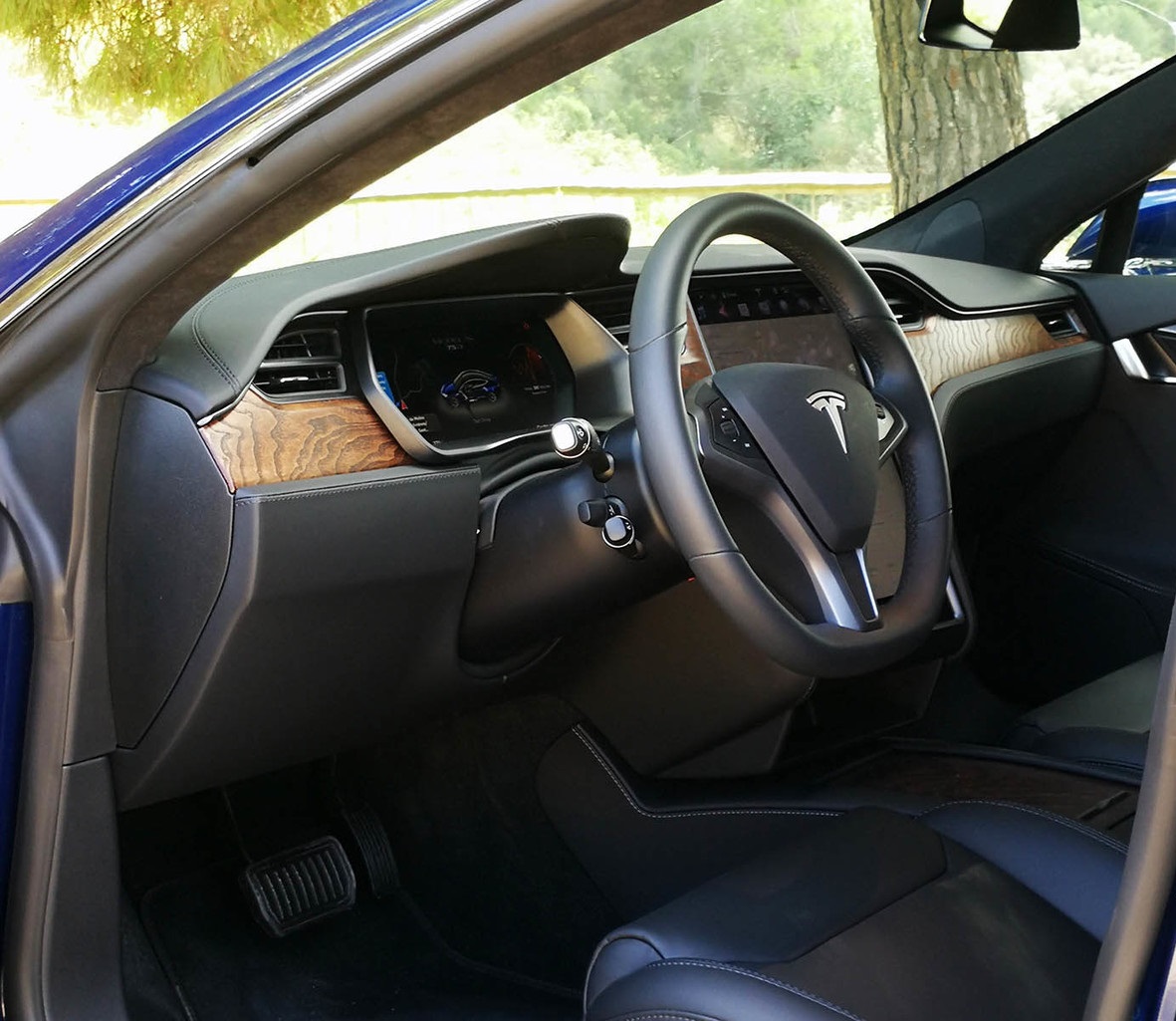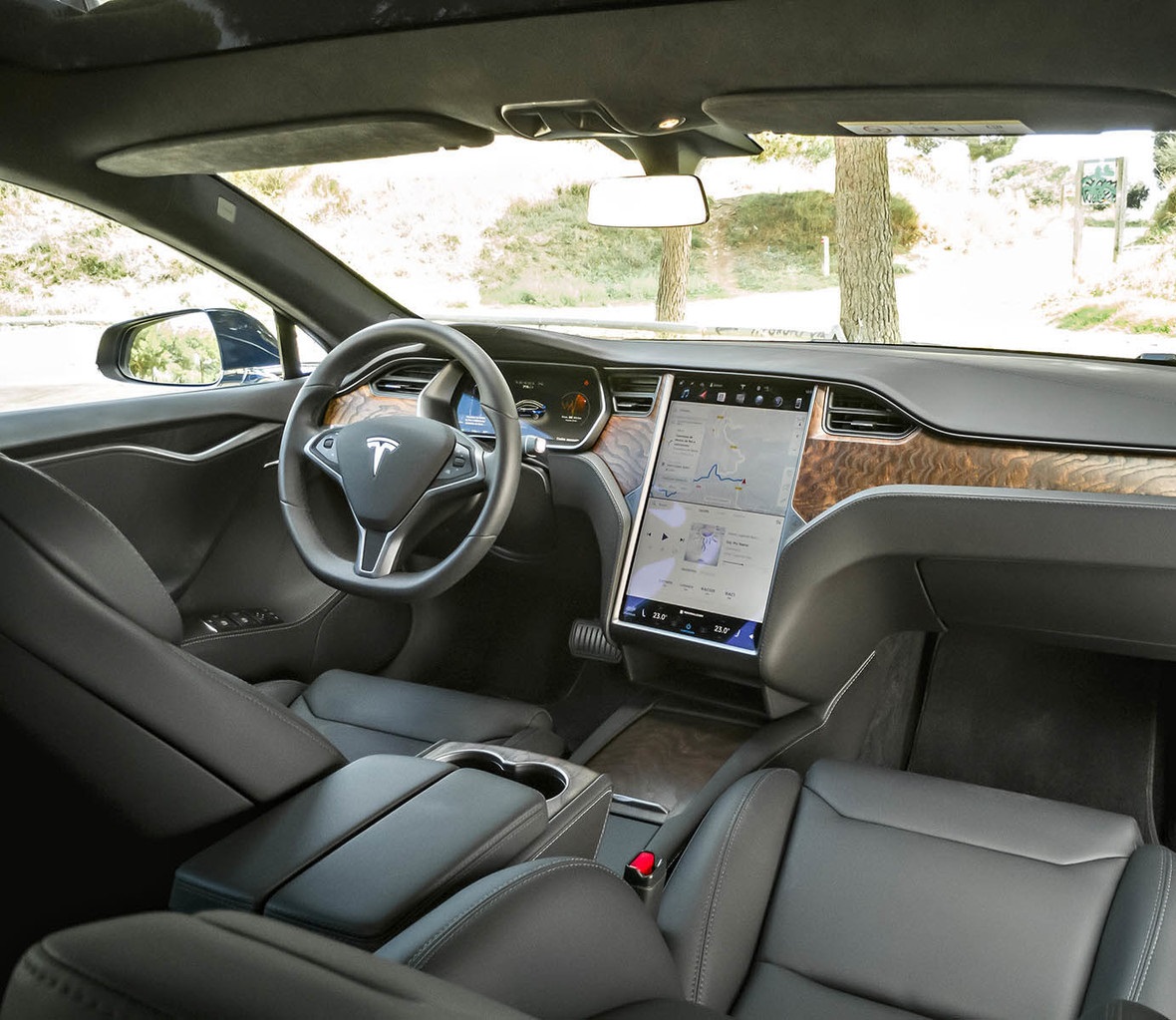Tesla Model S 100D: The electric car that dreamed of being a sports car

The Tesla Model S 100D base is already a powerful and high performance car, not to mention the beast of the P 100D. The Model S 100D offers a power of 423 C V, 660 Nm of torque available permanently and is capable of accelerating from 0 to 100 km / h in 4.3 seconds.
Any car that goes down from five seconds in a 0 to 100 km / h can be described as a cucumber entry, according to the popular saying. But as anyone who likes to drive or who likes cars and especially sports cars knows, acceleration figures are just one side of the coin that makes a car sporty, interesting or exciting.
All those who have experienced driving a Mazda MX-5, a Caterham Seven, a BMW Z3 or a BMW Z4 first generation, a Toyota GT86, a Renault Clio Sport, a Ford Fiesta ST, etc. know that power and 0 to 100 km / h are not everything.
In the end, what really makes you smile is how the car has taken the curve, the precision and speed with which it turns, with which it obeys the course changes that are ordered. It is the speed of step by curve. It is how you feel that the car obeys your orders and that you form one. Yes, it sounds a lot like Mazda’s Jimba Ittai, but it’s just that.
It’s not a matter of 0 to 100 or consumption, “it’s a matter of smiles per gallon,” explained Bob Hall when talking about the concept of the Mazda MX-5. Because while accelerations and recoveries are fun (in addition to being a plus in terms of safety) is not necessarily what is going to be used in a sports car.
Can you use a Tesla Model S 100D as you would with any other large sports car saloon, that is, without conditioning my driving style, in terms of consumption and driving pleasure?
But why look at a Tesla Model S under the prism of a sports saloon? Simply because it is the image that gives, that is moved by a flow of electrons, it is the least. Tesla has positioned the Model S as a rival to premium cars, a model that offers the same luxury, more technology and a certain sporty touch to praise its 0 to 100 km / h advertising a GTi in the 80s.
In addition, it is time to break that Tesla’s own dichotomy. You can search online and there are thousands of videos in which a Tesla smokes a Ferrari, a Lamborghini, a McLaren, a pon-here-the-name-of-your-sport-favorite. Without going any further, we ourselves have ever echoed those feats. However, I have the feeling that the Tesla client is the opposite of those videos. Without wishing to generalize (and it is only a personal appreciation), when you see a Tesla on the highway, you can go quietly at 100 km / h or 110 km / h in the right lane.
Many Tesla customers have probably not opted for that car because of its power. And although having a power reserve nothing negligible in case it gives them a certain tranquility, their motivations are different. These can range from simply having the latest fashionable car (Model X and its rear doors in falcon wing would be the best example for this case) to an interest in innovation, of course, through ecological awareness. In fact, the latter is usually the most cited along with technological innovation.
The main claim of technological innovation for Tesla is the Autopilot. Recall that the Autopilot is a semi-autonomous driving system level 2 that will one day lead to autonomous driving. It combines active cruise control with the Autosteer, which keeps the car in its lane. The vast majority of manufacturers (VAG, BMW, Mercedes-Benz, Toyota, Renault Nissan Alliance, etc.), propose similar systems in their models.
The Tesla is characterized by being very effective on highways (highways, highways) and can change lanes safely (just indicate with the turn signal), but “does not work” in very twisted stretches of secondary roads. Of course, I must admit that it is currently, together with the system inaugurated in the Mercedes E-Class, the best system on the market.
Thus, the almost permanent need in a trip to save on the consumption of the battery to reach the next point of loading or destination, does not encourage a sporty driving in a clear stretch. And it is that at 100 km / h we will travel more kilometers than at 130 km / h, of course. If we add the possibility of using the Autopilot, we have all the ingredients for a relaxed driving. Maybe too relaxed?
Do I really have to do hypermiling with more than 400 HP under my foot?
We are facing a car that, depending on the configuration and the selected mode, can have up to 760 hp (612 hp in normal mode). That is, 120 HP more than a Lamborghini Hurricane EVO along with a torque that gives accelerations capable of dislocating the passengers’ cervical if we do not warn them before we go to sink the right foot on the ground. And do we have to settle for walking Miss Daisy?
One of the premises of this test was to know if I could really use a Tesla Model S 100D as I would with any other large saloon, that is, without conditioning my driving style , in terms of consumption and driving pleasure.
I must confess, the hypermiling or efficient driving does not go with me. Maybe it’s a reaction to my past as a chauffeur in the ground army and I go every day stepping on eggs with an officer behind, but for many years I’ve been a bit more expeditious in my toll exits, in my cruising speed on fast lanes -when it is allowed- and in my way of driving in general.
So, instead of looking for a record of consumption or autonomy with a Model S, something that has already been done over and over again, I decided to drive the car as I would with any premium saloon. And one of the aspects in which more would be noticed is in the average consumption. Abusing the huge response of the Model S in acceleration (80 to 120 km / h in 2.75 s) every time someone had the nasty mania to come and stick to the rear bumper (is that nobody will respect the safety distances ?) and leaving as if there were no tomorrow from the tolls, with good weather and no wind, my average was 35.7 kWh, after spending 52.5 kWh / 100 km to travel the 147 km (in the case of the Model S 75D of the photo session) that separates Sant Cugat from Lleida Supercharger (I arrived with 30% autonomy).
It is finally a good surprise, even an average much higher than I managed in my first test of a Model S. And it is that the rugged terrain of my test route, going up and down mountain passes, had helped me to achieve a very low consumption. Here, I still achieved an average slightly lower than the average homologated by the EPA in the United States. According to the EPA, the Model S average is 20.5 kWh / 100 km (33 kWh / 100 miles).
Also keep in mind that the wind, whether aft or bow, significantly influences the consumption of any car. Although the Tesla are prior particularly careful in this aspect with a coefficient Cx of 0.24, during my test I hardly experienced wind. Be that as it may, this first data is positive. As long as we have Supercharger stations on hand in a trip, it is fairly easy to drive a Tesla Model S as you would with an Audi A7 Sportback. That is, without worrying about the autonomy of the car.
By the way, I mention the A7 Spotback not only because I tried it a few weeks after the Tesla, but also because it has a very similar concept in terms of dimensions, design and driving aids to Tesla. Of course, the differences in price and finishes between the two are very flagrant.
Dimensions of Audi A7, habitability of Mercedes S-Class
Although the Tesla Model S 100D has positioned itself as an alternative to the great premium saloons, there is still some route to improve in terms of finishes. In front of an Audi A7 Sportback, the Model S is light years behind the fastback saloon of Ingolstadt. The adjustments of the elements are correct pulling to good and the leather is of good quality (there is a choice without skins for vegan customers), but the plastics will be too hard for a clientele accustomed to an Audi A7, BMW, Mercedes-Benz CLS or Lexus. In addition, the wood of the dashboard seems false.
In short, the finishes of the Model S in a car over 100,000 dollars are simply correct. They would be finished premium in a car of 60,000 dollars, not in such an exclusive model. It is still not up to a Jaguar i-Pace or a Porsche Panamera. That said, it’s something subjective. In the United States, its main market, the perception of finishes is not the same as in Europe. Here, we tend to be more demanding. The real question is to know how the clientele will perceive it in front of the Porsche Taycan, assuming that in the Taycan the finishes are as good as in a Panamera, of course.
The trick of the Tesla Model S 100D on board is its habitability. Although it measures 4.98 m long (similar to an Audi A7 Sportback or a Mercdes-Benz CLS), the livability is really superb and worthy of a Mercedes-Benz S-Class long chassis. In front, despite the 17-inch screen, you have the feeling that there is plenty of space. Behind, there are three real squares, not “two squares and a gap that we use to homologate a fifth place and that nobody can use”.
Of course, for a car with such a large habitability surprises the total and absolute absence of holes and compartments to leave objects, such as the mobile that you leave charging via one of the two USB sockets. It is simply incomprehensible. Conversely, ahead, there are plenty of spaces. One of the central tunnel is practically a mini boot. Speaking of trunk, it has two porters, one of 745 liters (behind) and another of 150 liters (front).
Fast, but a set-up that does not do justice to the benefits
Once on board, it is easy to find the ideal driving position. And contrary to what one might think, the huge 17-inch screen is very easy to use and very ergonomic, it is also very fast; it is a success. From there you can control all aspects of the car (hardness of the steering, suspensions, and regenerative braking level), navigation, air conditioning, internet and music (with a subscription to Spotify included in the price of the car, another success). In the test of the Tesla Model X P100D we tell you more about its operation.
On the move and in the city, the silence that reigns on board is just as you expect in an electric, almost total. On the road, however, and above 120 km / h the aerodynamic noise becomes too present. And the faster you go, the more you will hear the wind and the tires.
With how easy it would be for Tesla -which is defined as a technological company- to use frequencies via loudspeakers that cancel noise, as they use so many other high-end cars. That acoustic isolation at highway speeds is something that is missing, but perhaps in the development they thought that the customer rarely would pass 110 km / h.
On fast roads, the Tesla Model S 100D boasts a high comfort associated with a remarkable aplomb that gives a lot of confidence. Even on firm deteriorated, the car does not lose its composure. Absorb the irregularities which Mercedes-Benz S-Class and curves there is a slight rebound with which the car ends up settling, as you could find in an Audi A7, for example.
Fast corners are not your favorite terrain. Thanks to the battery located on the floor of the car that gives it a very low center of gravity, it has a very high theoretical curve path. It is something that should help its dynamism in sections of the secondary network, especially on mountain roads.
The accelerations coming out of a curve are as impressive as in a straight line, thanks also to a traction without failures; the level of adherence is brutal. However, the Model S is a car in which one cannot be fine, it forces you to be something rough in sports driving. And there you lose part of the grace of a sports driving. I explain.
The steering (with three adjustable hardness levels, from an excessive assistance to the hardness of a BMW M) is precise and quite direct (although it does not transmit anything), the ultra-powerful braking and the response to the accelerator, almost instantaneous. Separately they are good elements, but they do not know how to work together. The steering puts the wheels exactly where you want, but you cannot raise your foot a bit from the accelerator to pass a curve due to regenerative braking. The engine brake is such that you lose a lot of speed.
You can adjust the intensity level of the regenerative braking to even eliminate it completely or almost. In return you should use more brakes, which then lack initial mordant. It is not a car that actually allows dosing the braking, even in a digressive braking. And in this situation we must not forget the weight of the car (2,275 kg) and the inertia that can result.













